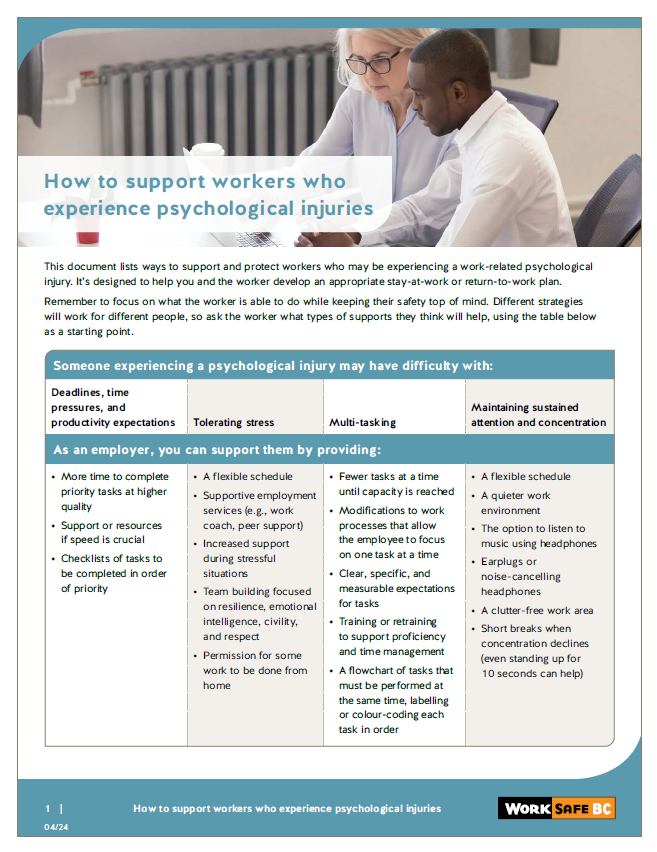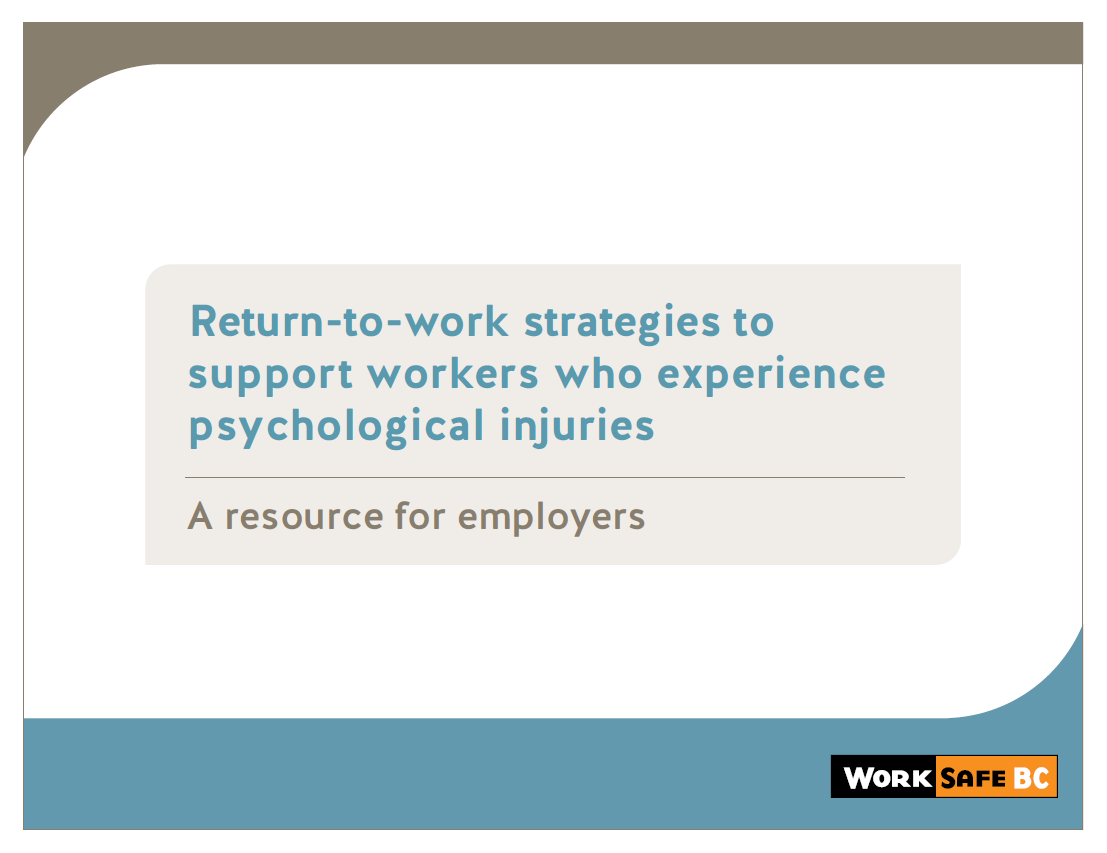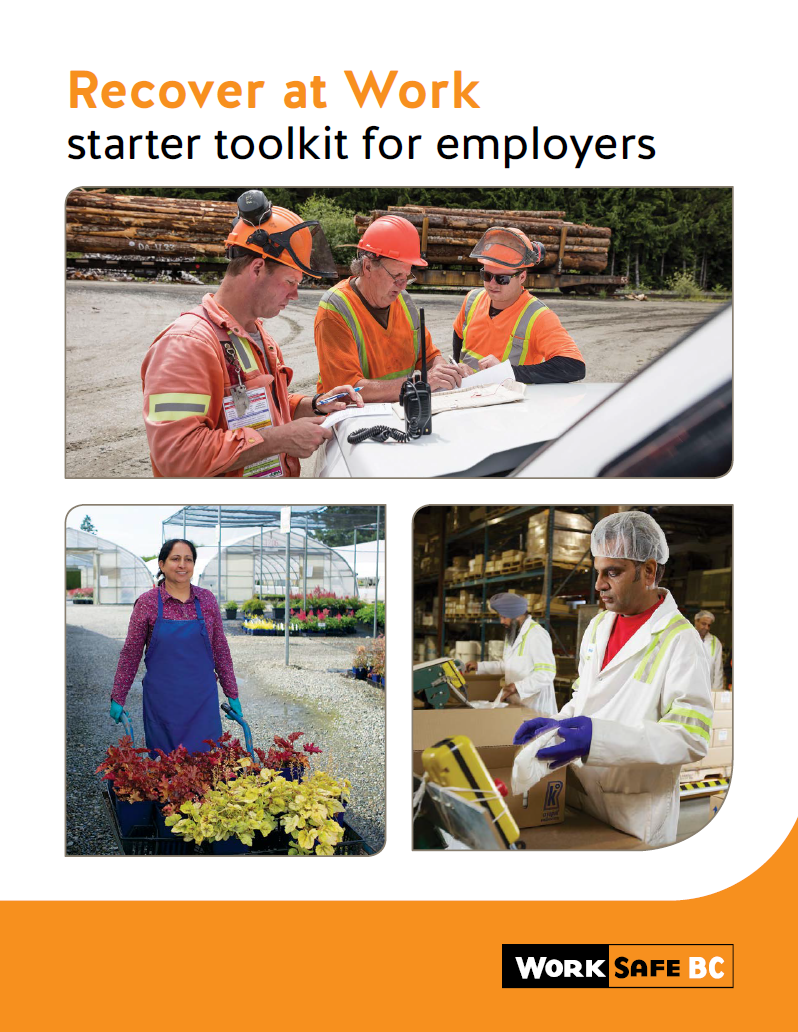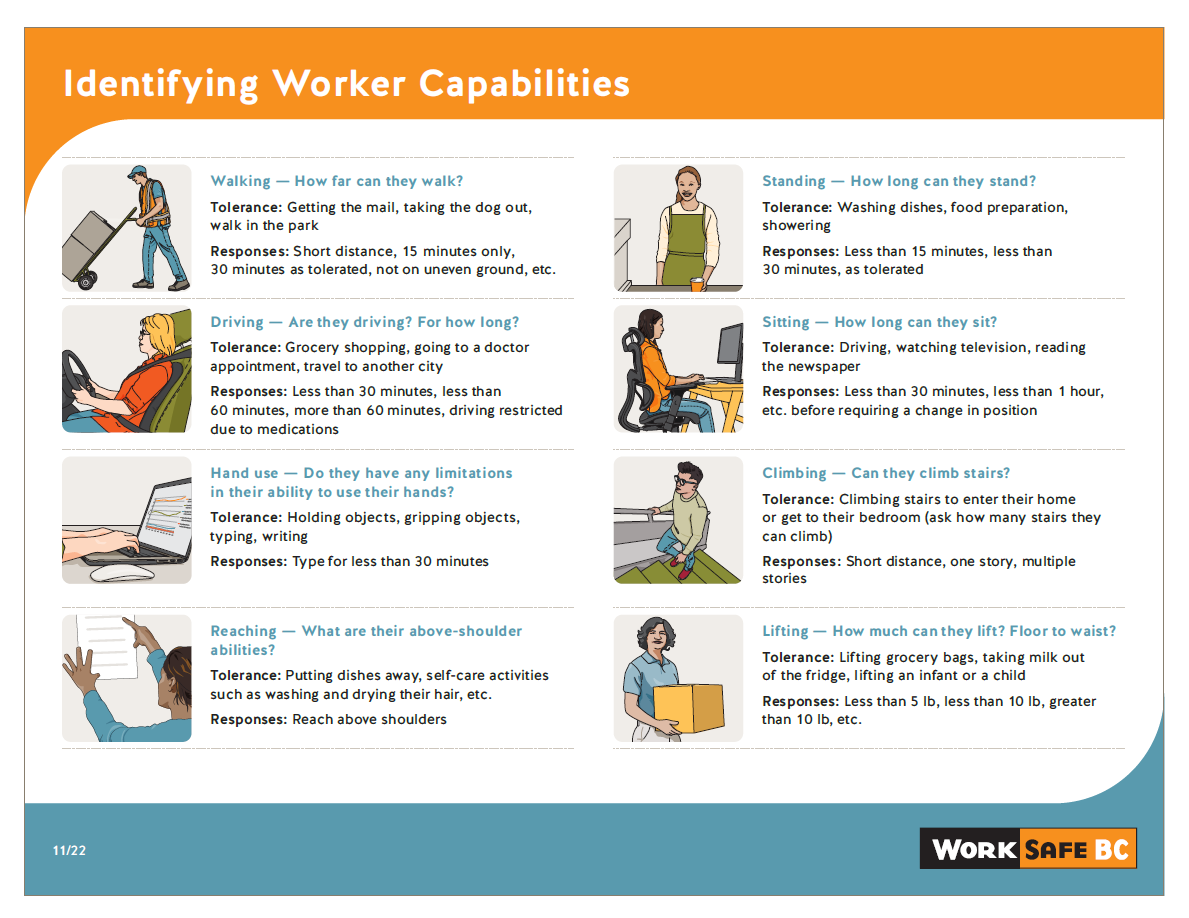Employers: Return-to-work information
Supporting injured workers to return to work while they recover is good for them and good for business. When workers can do suitable duties while they recover, it keeps them connected to the workplace and can prevent long-lasting disability. Returning to work safely while recovering requires collaboration between the worker and the employer.
New legal requirements: Duty to cooperate and duty to maintain employment
The provincial government has made amendments to the Workers Compensation Act that affect return to work. Effective January 1, 2024, employers and workers have a legal duty to cooperate with each other and with WorkSafeBC in timely and safe return to work following a worker’s injury, and certain employers have an obligation to return injured workers to work in specific circumstances.
For more information on Bill 41, see:
- Employers: Duty to cooperate and duty to maintain employment
- Bill 41 employer info session (November 16): View the presentation slides, watch a video of the session, or read questions and answers from the session
- Employer fact sheet: Duty to cooperate
- Employer fact sheet: Duty to maintain employment
- Benefits for employers
- Steps to take
- Need help?
- Resources
Benefits for employers
By keeping a worker connected to the workplace and giving them suitable duties, your business can experience several benefits. These may include:
- Retaining a skilled and experienced worker, which reduces recruitment and retraining costs
- Developing a stronger relationship with the worker, by demonstrating that they are valued
- Reducing the burden on co-workers
- Reducing productivity losses and workflow interruptions
- Reducing WorkSafeBC premiums
Steps to take
Employers and workers have a legal duty to cooperate in timely and safe return to work.
To help ensure a worker’s timely and safe return to work, follow these steps:
- Talk with the worker as soon as possible and maintain ongoing communication
Keep in contact with the injured worker after the injury. Your relationship with the worker is key to their successful return to work and a faster recovery. -
Keep the worker connected to the workplace
Include the injured worker in staff meetings, special events, training, or even coffee with co-workers to keep them involved. Staying connected supports the worker’s recovery and return to work. -
Ask the worker what duties they can do
Be flexible, and together with the worker identify safe and suitable work for them. To support them while they recover, the worker’s duties must be meaningful, be within their abilities, and not cause harm or slow their recovery. For practical support and accommodation ideas specific to an injured worker’s job tasks, visit Job Demands and Accommodation Planning Tool (JDAPT) for organizations. -
Collaborate with the worker to develop a return-to-work plan
Encourage everyone to focus on what the worker can do. Collaborate with the worker to develop a return-to-work plan that progresses them back to their pre-injury level of employment and allows them to restore their earnings. Meet with the worker at regular intervals and support their progress as they recover. Modify and adjust the plan as needed. - Document the return-to-work plan
A written return-to-work plan helps everyone understand the plan’s goals and expectations. Give the injured worker a copy of the plan and send one to WorkSafeBC. Although WorkSafeBC doesn’t require medical approval for a worker to return to work, a written plan helps the worker to update their health care provider, if needed.
Need help?
We’re here to help. Please call our Claims Call Centre if:
- You have any questions or concerns about a worker’s return to work
- A return-to-work plan lasts longer than anticipated
- The worker isn’t making progress toward their pre-injury level of duties
For general questions related to return-to-work planning, consultation, and support, please call the Return to Work Consultation and Education Services Support Line.




